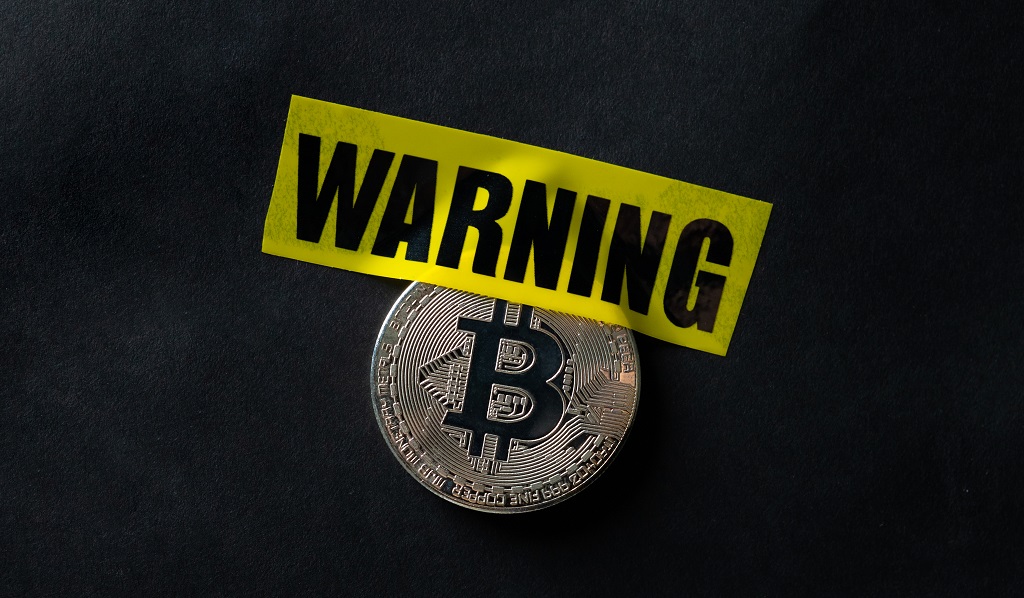Crypto staking is a term that has been making waves in the blockchain ecosystem. It’s a concept that has the potential to redefine the way we perceive investments and financial security. This comprehensive guide will delve into the intricacies of crypto staking, its importance in the blockchain ecosystem, and how you can leverage it for your benefit.
Table of Contents
What is Crypto Staking?
Understanding Crypto Staking
Understanding crypto staking involves delving into the mechanics of certain types of blockchain networks and the role that individual participants can play in maintaining and securing these networks.
Crypto staking is a process that is central to Proof of Stake (PoS) blockchain networks. In contrast to Proof of Work (PoW) networks, where miners solve complex mathematical problems to validate transactions and create new blocks, PoS networks rely on participants, or validators, who ‘stake’ their own cryptocurrency to perform these tasks.
The Role of Staking in PoS Blockchains
In Proof-of-Stake (PoS) blockchains, staking plays a critical role in maintaining the network’s security, operation, and the creation of new blocks.
In a PoS system, the creation of new blocks, also known as “forging” or “minting,” is done by validators who are chosen based on the number of coins they are willing to “stake” as collateral. This is a stark contrast to Proof-of-Work (PoW) systems, where new blocks are “mined” by solving complex mathematical problems.
Here’s a deeper look into the role of staking in PoS blockchains:
1. Network Security: Staking enhances the security of the PoS blockchain. Validators “stake” or lock up a certain amount of their coins as collateral. If they validate fraudulent transactions or attempt to attack the network, they risk losing their staked coins. This system incentivizes validators to act honestly, thereby enhancing the network’s security.
2. Block Creation: In PoS blockchains, the right to create a new block is determined by the amount of cryptocurrency a validator has staked. The more coins a validator stakes, the higher their chances of being chosen to create a new block. This process is much more energy-efficient compared to the computationally intensive mining process in PoW systems.
3. Transaction Validation: Validators in a PoS system are responsible for validating new transactions and adding them to the blockchain. The staking mechanism ensures that validators have a stake in the network, encouraging them to validate transactions accurately.
4. Governance: In some PoS blockchains, staking also allows validators to participate in the governance of the network. This could involve voting on proposed changes to the network’s protocols or other important decisions. The idea is that those who have a larger stake in the network should have a larger say in its governance.
In summary, staking is a fundamental aspect of PoS blockchains, playing a crucial role in network security, block creation, transaction validation, and in some cases, network governance. It’s a system that incentivizes active participation and honest behavior, helping to maintain the integrity and functionality of the network.
The Benefits of Crypto Staking

Potential Returns from Staking
Crypto staking can offer attractive returns, making it a popular choice for investors looking to earn passive income from their cryptocurrency holdings. The potential returns from staking come in the form of additional cryptocurrency tokens, which are distributed to stakers as rewards for their participation in the network.
The exact amount of returns you can earn from staking depends on several factors:
1. The Amount Staked: Generally, the more cryptocurrency you stake, the higher your potential returns. This is because in most Proof-of-Stake (PoS) networks, the chance of being chosen to validate transactions and create new blocks (and thus earn rewards) is proportional to the amount of cryptocurrency you have staked.
2. The Staking Network: Different PoS networks offer different staking rewards. These rewards can be influenced by factors such as the network’s inflation rate, transaction fees, and the total amount of cryptocurrency staked on the network.
3. Staking Duration: Some networks offer higher rewards for stakers who are willing to lock up their cryptocurrency for longer periods. This is because longer staking durations provide more stability to the network.
4. Network Participation: In some networks, stakers can earn additional rewards by participating in network governance, such as voting on proposals.
It’s important to note that while staking can offer attractive returns, it also comes with risks. The staked tokens are usually locked for a certain period, during which they can’t be sold or moved. If the market price of the staked cryptocurrency falls during this period, it could lead to losses that outweigh the earned staking rewards.
Additionally, some staking networks operate on a sliding scale where the rewards decrease as more people participate in staking, meaning early adopters often receive higher rewards.
The potential returns from staking can be a lucrative way to earn passive income from your cryptocurrency holdings. However, like any investment, it’s important to thoroughly research and understand the staking process, the specific PoS network, and the potential risks involved.
Staking and Network Security
Staking plays a crucial role in maintaining the security of Proof-of-Stake (PoS) blockchain networks. It does so by incentivizing good behavior among network participants and making attacks economically unfeasible. Here’s how it works:
1. Incentivizing Good Behavior: In PoS networks, validators are chosen to create new blocks based on the amount of cryptocurrency they are willing to ‘stake’ or lock up as collateral. This stake acts as a form of security deposit. If a validator tries to manipulate the system or validate fraudulent transactions, they risk losing a portion or all of their staked coins. This potential loss serves as a strong deterrent against malicious activities, incentivizing validators to act honestly and maintain the integrity of the network.
2. Making Attacks Costly: In order to gain control of a PoS network and carry out a ‘51% attack‘ (where a single entity controls the majority of the network’s mining power), an attacker would need to own and stake more than 50% of the network’s total cryptocurrency. Given the high market value of most cryptocurrencies, this would be extremely expensive and likely more costly than any potential gain from the attack. This makes such attacks economically unfeasible, further enhancing the network’s security.
3. Encouraging Active Participation: The potential rewards from staking (in the form of additional cryptocurrency) encourage more users to participate in the staking process. The more users stake their coins, the more decentralized and secure the network becomes. A widely distributed network of validators makes it harder for any single entity to gain control of the network.
In summary, staking is a key mechanism for maintaining network security in PoS blockchains. It incentivizes honesty among validators, makes attacks economically unfeasible, and encourages widespread participation, all of which contribute to the overall security and stability of the network.
Risks and Challenges in Crypto Staking

Volatility and Other Risks
While crypto staking can offer attractive returns, it also comes with its own set of risks. One of the primary risks is the inherent volatility of cryptocurrencies. Here’s a deeper look into the risks associated with crypto staking:
1. Volatility Risk: Cryptocurrencies are known for their price volatility. The value of the staked coins can fluctuate significantly during the staking period. If the price of the staked cryptocurrency falls significantly, the staker could end up with a net loss, even after accounting for staking rewards.
2. Lock-up Period Risk: When you stake your coins, they are typically locked up for a certain period and can’t be sold or moved. If you need to liquidate your assets quickly due to a financial need or if the market starts to drop, you may not be able to do so until the end of the staking period.
3. Slashing Risk: In some PoS networks, if a validator node goes offline or fails to validate correctly, a portion of the staked coins may be “slashed” or forfeited. This is a security measure to ensure validators act in the best interest of the network, but it adds an additional risk for stakers.
4. Network Risk: The security and performance of the PoS network itself is another risk factor. If the network suffers a cyber attack or a technical failure, it could impact the staking process and potentially lead to a loss of staked coins.
5. Regulatory Risk: As with all cryptocurrency activities, staking is subject to regulatory risk. Changes in laws or regulations can impact the value of the staked cryptocurrency or the legality of staking activities.
Technical Challenges
Crypto staking, while potentially lucrative, does come with its own set of technical challenges that participants need to be aware of. Here are some of the main technical challenges associated with crypto staking:
1. Node Operation: In some staking models, particularly those that involve running a validator node, a certain level of technical expertise is required. Setting up and maintaining a node involves understanding the specific blockchain protocol, managing server resources, and ensuring a stable and secure internet connection.
2. Wallet Management: Staking usually requires the use of a specific type of wallet that supports the staking function. Managing these wallets, ensuring they are secure, and understanding how to use them can be a technical challenge, especially for those new to the crypto space.
3. Network Connectivity: For staking systems where you’re running a node, your node needs to be online and connected to the network at all times to validate transactions and earn rewards. This requires a stable and reliable internet connection, which can be a challenge in some areas.
4. Security Risks: Staking involves the risk of digital theft. Stakers need to ensure their staked coins are secure from hackers. This can involve complex security measures like using hardware wallets, implementing multi-signature protocols, and regularly updating and patching software to protect against vulnerabilities.
5. Software Updates: Blockchain networks frequently update their software to add new features, fix bugs, or improve security. Stakers need to keep up with these updates to ensure their nodes are running the correct software version. Failing to update in a timely manner could result in a loss of staking rewards or, in some cases, a slashing event where a portion of the staked coins are forfeited.
How to Get Started with Crypto Staking

Choosing the Right Crypto Asset
Choosing the right crypto asset to stake is a crucial step in the staking process. This decision should be based on a variety of factors, including the potential returns, the asset’s role in the network, and your own risk tolerance. Here are some key considerations:
1. Staking Rewards: Different cryptocurrencies offer different staking rewards. These rewards can be influenced by factors such as the network’s inflation rate, transaction fees, and the total amount of cryptocurrency staked on the network. Research the potential returns of staking different cryptocurrencies to understand which ones might offer the best rewards.
2. Network Security and Stability: The security and stability of the blockchain network are important considerations. Networks that have been around longer and have a larger number of nodes are generally considered more secure and stable. Look for networks with a strong track record and a large, active community.
3. Asset Liquidity: Consider the liquidity of the crypto asset. More liquid assets can be easier to buy and sell, which can be important if you need to adjust your staking position or if you want to cash out your rewards.
4. Asset Volatility: Cryptocurrencies can be highly volatile. If the price of the staked cryptocurrency falls significantly, it could lead to a net loss, even after accounting for staking rewards. Consider the historical price volatility of the asset and your own tolerance for risk.
5. Project Fundamentals: Look at the fundamentals of the project behind the cryptocurrency. Is the project solving a real problem? Does it have a strong team behind it? Is there a clear roadmap for the future? Strong project fundamentals can indicate a higher likelihood of the project (and its associated cryptocurrency) being successful in the long term.
6. Regulatory Compliance: Ensure that the crypto asset you choose is compliant with regulations in your jurisdiction. Non-compliance could lead to legal issues down the line.
Steps to Start Staking
Start
└───>Research
└───> Choose a Cryptocurrency
└───> Acquire the Cryptocurrency
└───> Choose a Wallet
└───> Start Staking
└───> Monitor Your Staking
└───> End
Starting with crypto staking involves several steps. Here’s a detailed breakdown:
Step 1: Research: Start by researching different cryptocurrencies and staking opportunities. Consider factors like potential returns, network security, asset liquidity, and your own risk tolerance.
Step 2: Choose a Cryptocurrency: Based on your research, choose a cryptocurrency that offers staking and aligns with your investment goals.
Step 3: Acquire the Cryptocurrency: Purchase the chosen cryptocurrency through a crypto exchange. Ensure the exchange supports the chosen cryptocurrency and that you’re aware of any fees associated with the purchase.
Step 4: Choose a Wallet: Transfer your purchased cryptocurrency to a secure wallet that supports staking. This could be a software wallet or a hardware wallet for added security.
Step 5: Start Staking: Follow the specific staking process for your chosen cryptocurrency. This usually involves locking up a certain amount of your cryptocurrency in your wallet and connecting to the network.
Step 6: Monitor Your Staking: Regularly check on your staking status. Some networks require you to be online and connected at all times, while others do not. Make sure you’re receiving your staking rewards as expected.
Top Crypto Assets for Staking
Overview of Top Crypto Assets
There are several crypto assets that offer staking. Here’s a simple table for comparison:
| Crypto Asset | Price | Reward | Adjusted Reward | Staking Market Cap |
|---|---|---|---|---|
| Ethereum | $1,838.41 | 4.97% | 5.41% | $36.82B |
| Solana | $16.85 | 4.4% | 6.78% | $6.53B |
| Cardano | $0.28 | 7.52% | 3.14% | $6.32B |
| BNB Chain | $246.24 | 2.88% | 2.34% | $5.63B |
| Avalanche | $12.46 | 8.63% | 7.51% | $3.25B |
Crypto Staking Services

Understanding Staking Services
Staking services are platforms that simplify the process of staking for users, especially those who may not have the technical expertise to stake on their own. They handle the technical aspects of staking and distribute the rewards among participants. Here’s a deeper look into staking services:
1. Simplification of Staking Process: Staking can be a complex process, requiring technical knowledge and constant monitoring. Staking services simplify this process by handling the technical aspects of staking. Users simply deposit their coins into the staking service, and the service takes care of the rest.
2. Pooling Resources: Staking services often operate by pooling the resources of multiple users. This can increase the chances of being selected to validate transactions and create new blocks, which can lead to more consistent rewards. This is particularly beneficial for users with smaller amounts of cryptocurrency, who might not be selected to validate transactions if staking on their own.
3. Reward Distribution: Staking services also handle the distribution of rewards. The rewards earned from validating transactions and creating new blocks are distributed among users, proportional to the amount of cryptocurrency they have staked.
4. Security and Maintenance: Staking services are responsible for the security and maintenance of the staked coins. They ensure that the staked coins are secure and that the staking software is up-to-date.
However, it’s important to note that while staking services offer convenience, they also come with risks. Users are entrusting their coins to a third party, which could be a potential point of failure. If the staking service is hacked or goes out of business, users could lose their staked coins. Therefore, it’s important to choose a reputable staking service and understand the terms of service before staking your coins.
Choosing a Staking Service
Choosing a staking service is an important decision that can significantly impact your staking experience and potential returns. Here are some key factors to consider when choosing a staking service:
1. Reputation: The reputation of the staking service is crucial. Look for services that are well-established and have positive reviews from users. Research the team behind the service and their track record in the crypto industry.
2. Security: Security is paramount when it comes to handling cryptocurrencies. Ensure the staking service has robust security measures in place to protect your staked coins. This could include measures like cold storage, multi-signature transactions, and regular security audits.
3. Supported Coins: Not all staking services support all staking coins. Make sure the service you choose supports the cryptocurrency you wish to stake.
4. Fees: Staking services usually charge a fee for their services. These fees can vary widely between services, so it’s important to understand the fee structure before committing your coins. Fees can eat into your staking rewards, so it’s important to factor them into your potential returns.
5. Customer Support: Good customer support can be very valuable, especially if you’re new to staking. Look for services that offer responsive, helpful customer support.
6. User Interface: If you’re not particularly tech-savvy, you might want to choose a service with a user-friendly interface that makes the staking process as straightforward as possible.
7. Community and Resources: Some staking services have active communities and provide educational resources to help users understand the staking process and stay updated on network news and updates.
Remember, while staking services can make the staking process easier, they also involve entrusting your coins to a third party. Always do your own research, understand the risks involved, and consider seeking advice from financial advisors or experts in the field.
Future of Crypto Staking
The future of crypto staking is expected to be dynamic and promising, given the ongoing developments in the blockchain and cryptocurrency space. Here are some potential trends and developments that could shape the future of crypto staking:
1. Increased Adoption of Proof of Stake (PoS): As the environmental impact of Proof of Work (PoW) blockchains like Bitcoin becomes a growing concern, more new blockchains are likely to adopt the PoS consensus mechanism, which is more energy-efficient. This could lead to more opportunities for staking.
2. Evolution of Staking Models: As the crypto space evolves, we could see the emergence of new staking models that offer improved security, higher rewards, or other benefits. For example, Ethereum is in the process of transitioning to Ethereum 2.0, which will introduce a new staking model.
3. Regulatory Developments: As with all aspects of the crypto space, regulatory developments could have a significant impact on staking. While some jurisdictions have been supportive of crypto staking, others have been more cautious. Future regulatory changes could either facilitate or hinder the growth of crypto staking.
4. Integration with DeFi: Staking is already a key component of many Decentralized Finance (DeFi) platforms, and this trend is likely to continue. We could see more innovative ways of integrating staking with other DeFi services, creating new opportunities for earning passive income.
5. Improved Accessibility: As the crypto space matures, staking is likely to become more accessible to everyday users. This could be facilitated by user-friendly staking platforms, improved wallet technology, and educational resources.
Conclusion
Crypto staking represents a significant development in the blockchain and cryptocurrency space. By providing a mechanism for network security, transaction validation, and a way for users to earn rewards from their cryptocurrency holdings, staking has become a key component of many Proof-of-Stake (PoS) blockchains.
However, like any investment, staking comes with its own set of risks and challenges. The volatility of cryptocurrencies, the technical requirements of staking, and the potential for loss due to hacking or fraud are all factors that potential stakers need to consider.
Choosing the right crypto asset for staking, understanding how to use staking services, and staying informed about developments in the staking space are all crucial for successful staking. As the blockchain space continues to evolve, we can expect to see new staking models, regulatory developments, and increased integration with DeFi services.
Ultimately, the future of crypto staking looks promising, but it’s important for each individual to do their own research and consider their own risk tolerance and investment goals. Whether you’re a seasoned crypto investor or new to the space, staking offers an exciting opportunity to participate in the blockchain ecosystem and potentially earn passive income from your cryptocurrency holdings.
FAQs
What is staking crypto?
Staking crypto refers to the process of participating in a Proof-of-Stake (PoS) blockchain network by holding a cryptocurrency in a digital wallet to support the operations of that network. This includes validating transactions and securing the network.
How to stake crypto?
To stake crypto, you first need to own a cryptocurrency that supports staking. Then, you lock up a certain amount of that cryptocurrency in a wallet that supports staking. The specific process can vary depending on the cryptocurrency and the wallet.
How to stake Bitcoin?
Bitcoin operates on a Proof-of-Work (PoW) system, not a Proof-of-Stake (PoS) system, so it cannot be staked in the traditional sense. However, some platforms offer “synthetic staking” where you can earn interest on your Bitcoin holdings.
What are staking rewards?
Staking rewards are the incentives received by those who stake their cryptocurrencies. These rewards, usually in the form of additional cryptocurrency tokens, are given for participating in the network by validating transactions and securing the network.
How to use stake in the United States?
To stake in the United States, you first need to own a staking-supported cryptocurrency. Then, you can stake your coins through a crypto wallet or a staking service that is available in the United States. Be sure to understand the tax implications of staking, as staking rewards are typically considered taxable income.
What does staking mean in NFT?
Staking can also apply to the world of Non-Fungible Tokens (NFTs). Some platforms allow you to stake NFTs to earn rewards. The specifics can vary greatly depending on the platform and the NFT, but the general concept is similar to staking cryptocurrencies: you are providing resources to a network in exchange for rewards.


